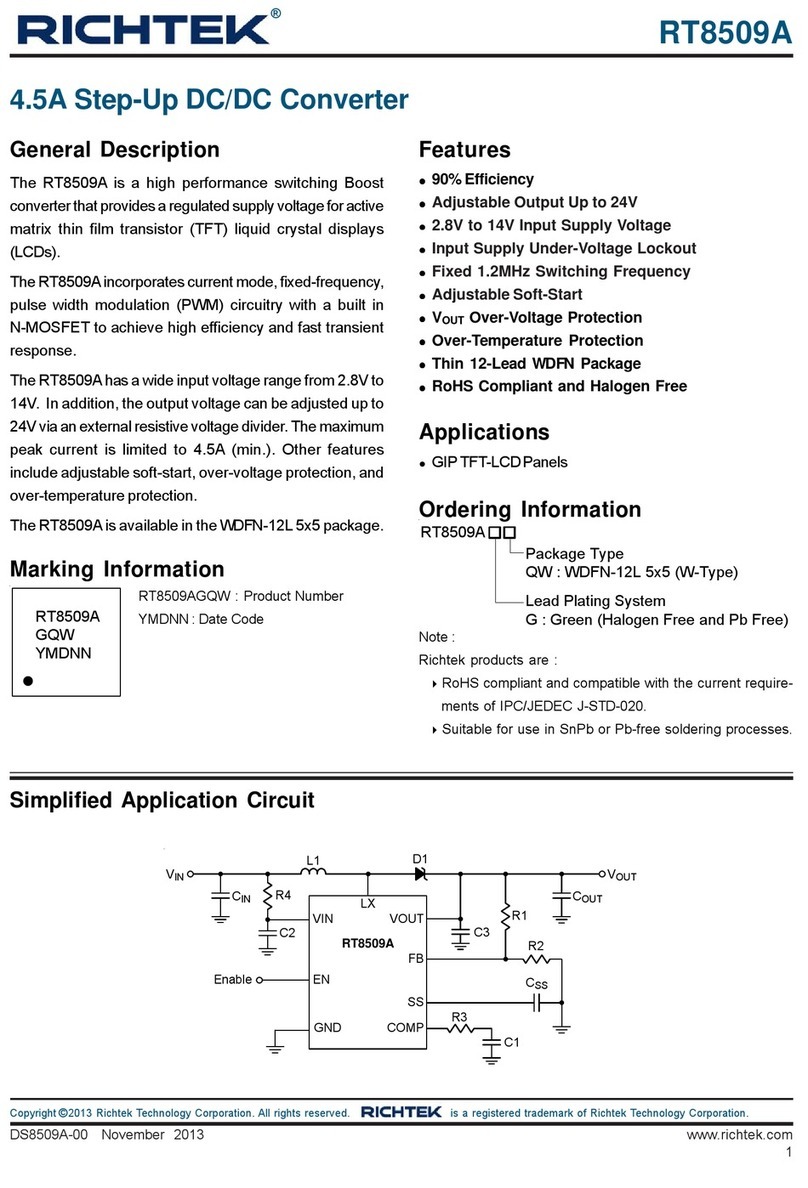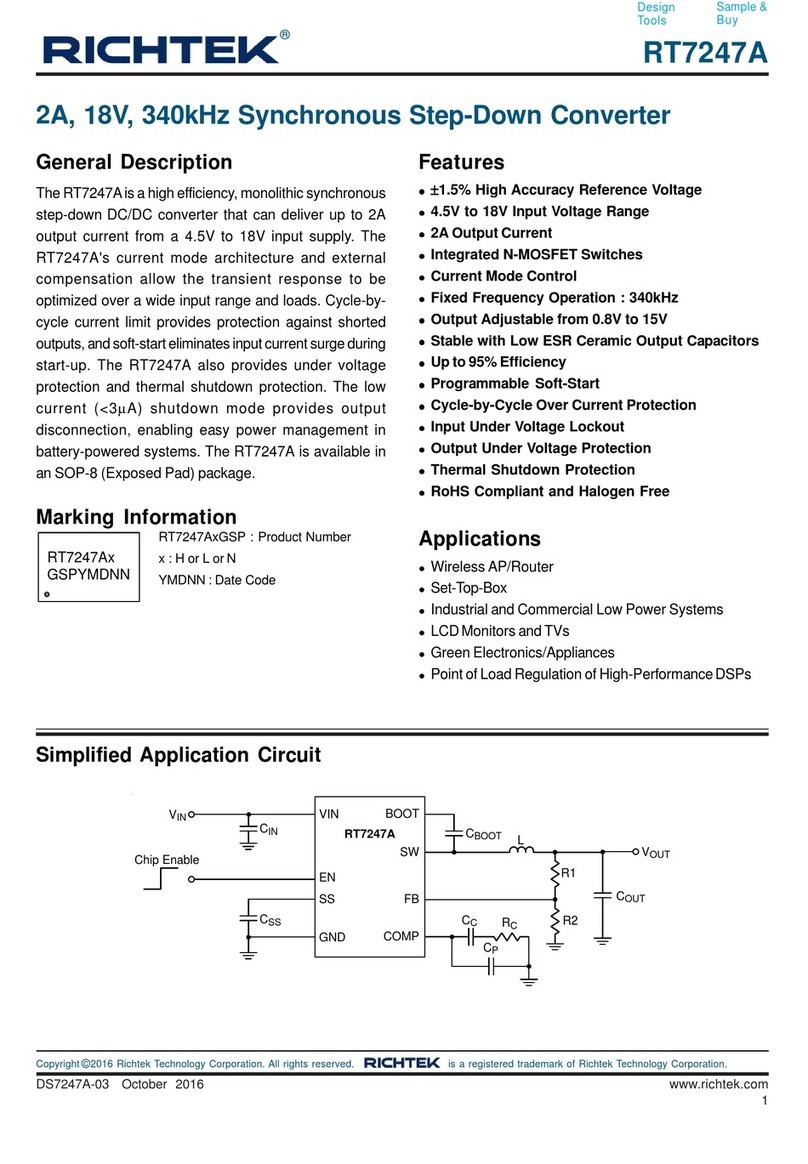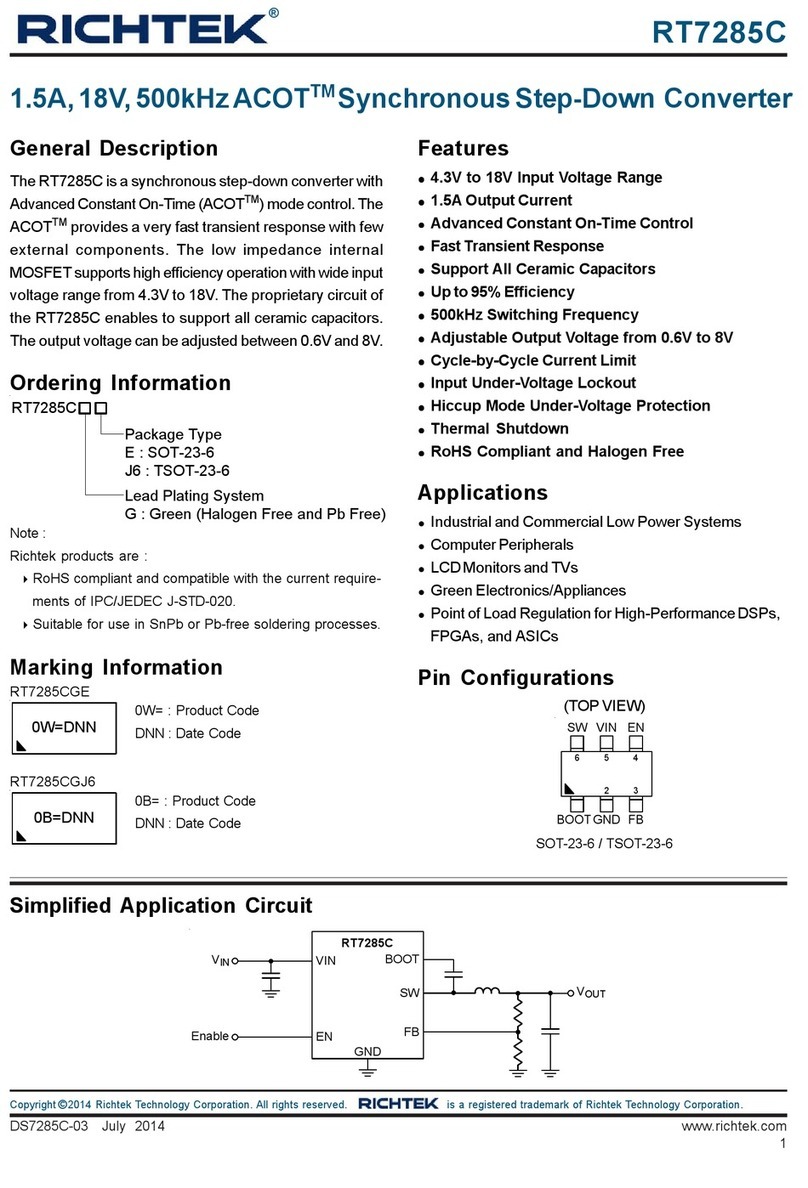RT7297B
10 DS7297B-02 September 2012www.richtek.com
©
Copyright 2012 Richtek Technology Corporation. All rights reserved. is a registered trademark of Richtek Technology Corporation.
OUT OUT
LIN
VV
I = 1
fL V
⎡⎤⎡ ⎤
Δ×−
⎢⎥⎢ ⎥
×
⎣⎦⎣ ⎦
Under Voltage Protection
Hiccup Mode
FortheRT7297BH,itprovidesHiccupMode UnderVoltage
Protection (UVP). When the VFB voltage drops below
0.4V, the UVP function will be triggered to shut down
switching operation. If the UVP condition remains for a
period, the RT7297BH will retry automatically. When the
UVP condition is removed, the converter will resume
operation. The UVP is disabled during Soft-Start period.
Having a lower ripple current reduces not only the ESR
lossesintheoutputcapacitors butalsotheoutputvoltage
ripple.Highfrequencywithsmall ripplecurrent canachieve
the highest efficiency operation. However, it requires a
large inductor to achieve this goal.
Fortheripplecurrentselection,the valueofΔIL=0.24(IMAX)
will be a reasonable starting point. The largest ripple
current occurs at the highest VIN. To guarantee that the
ripple current stays below the specified maximum, the
inductorvalueshould bechosenaccordingto thefollowing
equation :
Table 2. Suggested Inductors for Typical
Application Circuit
Component
Supplier Series Dimensions
(mm)
TDK VLF10045 10 x 9.7 x 4.5
TDK SLF12565 12.5 x 12.5x 6.5
TAIYO
YUDEN NR8040 8 x 8 x 4
OUT OUT
L(MAX) IN(MAX)
VV
L = 1
fI V
⎡⎤⎡ ⎤
×−
⎢⎥⎢ ⎥
×Δ
⎣⎦⎣ ⎦
Theinductor'scurrentrating(causeda40°Ctemperature
rising from 25°C ambient) should be greater than the
maximum load current and its saturation current should
begreaterthanthe short circuit peak current limit.Please
see Table 2 for the inductor selection reference.
Figure 5. Hiccup Mode Under Voltage Protection
Figure6.Latch-OffModeUnderVoltageProtection
Latch-Off Mode
For the RT7297BL, it provides Latch-Off Mode Under
Voltage Protection (UVP). When the FB voltage drops
below half of the feedback reference voltage, VFB, UVP
willbetriggered andtheRT7297BLwillshutdownin Latch-
Off Mode. In shutdown condition, the RT7297BL can be
reset by EN pin or power input VIN.
Over Temperature Protection
The RT7297B features an Over Temperature Protection
(OTP) circuitry to prevent from overheating due to
excessive power dissipation. The OTP will shut down
switching operation when junction temperature exceeds
150°C. Once the junction temperature cools down by
approximately20°C,theconverterwillresumeoperation.
Tomaintaincontinuousoperation,themaximumjunction
temperatureshouldbelowerthan125°C.
Inductor Selection
Theinductorvalueandoperating frequencydeterminethe
ripple current according to a specific input and output
voltage. The ripple current ΔILincreases with higher VIN
anddecreases with higher inductance.
Time (50ms/Div)
Hiccup Mode
VOUT
(2V/Div)
ILX
(2A/Div)
IOUT = Short
Time (250μs/Div)
Latch-Off Mode
VOUT
(2V/Div)
ILX
(2A/Div)
IOUT = Short






























